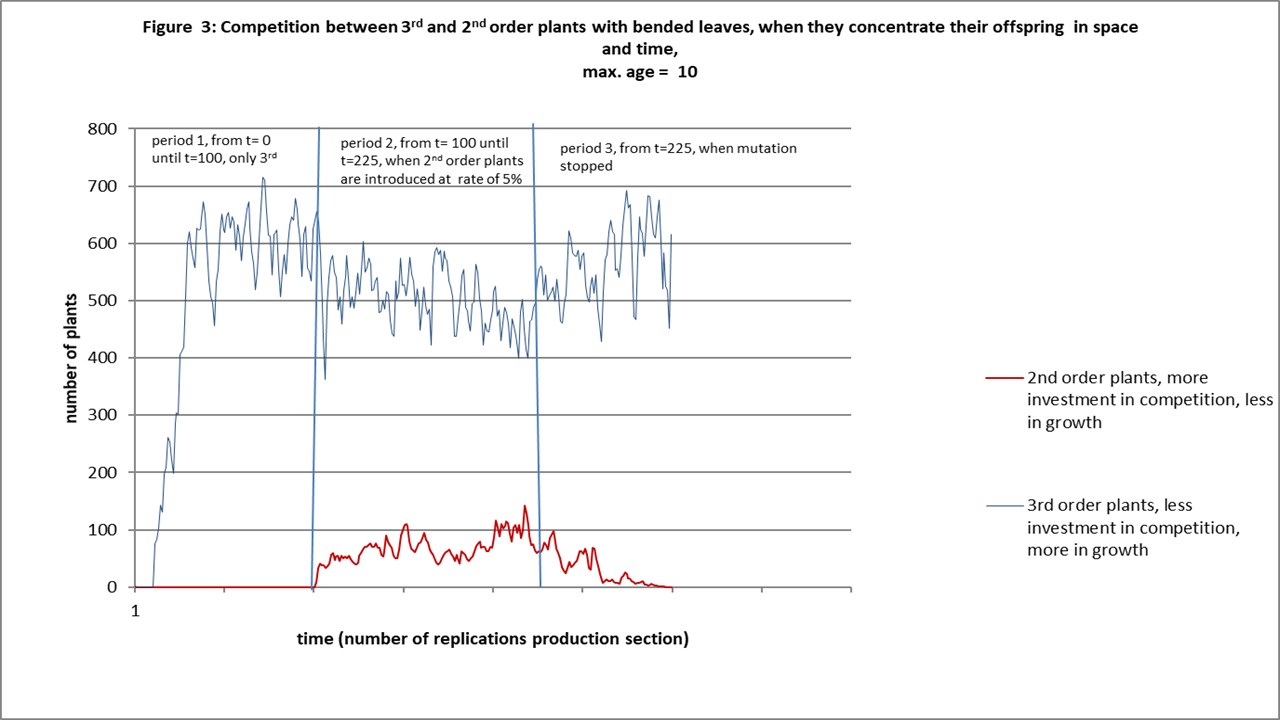Introduction
A think experiment (link1) showed a possible generalization of the second order polynomial pattern in the direction in time for both plant growth and gravity. Four attempts to falsify this (ridiculous?) idea did not succeed immediately. A fifth (link2) seems also not to falsify, but as it is based on a change of the construction of the plant we should check if the starting point, the winning of second order growth from slower and faster growing plants in evolution, was still valid.
The fifth originated from the idea of bending of the space by gravity. This phenomenon was supposed not to be found in the growth of plants. An experiment (link2) proofed otherwise, as bent leaves won from horizontal leaves. Of course, one had to assume, and this is very speculative, that the bent space by gravity has the same “goal” as the bent leaves, i.e. intercepting energy (mass) in the best way for the “struggle for survival”.
As stated before, we had to verify if second order growth is still winning from faster growing plants, i.e. third order growth.
Methods
For the test second order against third order growth we used the methods described in an earlier experiment (link3). We changed the horizontal growth of the leaves in curved leaves, as proposed in the experiment (link2) which showed simulated plants to win when you bend the leaves.
Results
Figure 1 represent the results.

Now second order polynomial growth does not win anymore. It is even difficult to build up a population, when third order mutates for 0.05 % to second order.
It gives more insight in the results of simulated plants as simple as possible. The winning of the second order in the case of horizontal leaves is the result of special mechanism: The third order plants keep a high density by means of a lot of draws, with lead to dying at a low age and low sizes. Seldom plants escape to higher ages and bigger sizes. It is in these circumstances where second order plants emerge as winning, because they introduce faster a competitive part.
Third order plants with curved leaves don’t produce these high densities by a lot of draws. The curve in the leaves make the productive part also contributing to the height and therefore to competition. So, they introduce faster the competitive part, almost as fast as the second order plants, because of faster total growth. Now third order plants make enough space free to escape to higher ages and higher sizes, and these “giants” eliminate the much smaller second order plants.
The end of the think experiment seems to appear as the basic assumption of the think experiment, the winning of the second order plants in evolution, is challenged. Notice, this is concluded in experiments with two-dimensional plants as simple as possible.
The think experiment was not designed for it, but had at least a result: It led to consider another variable in simulation experiments, i.e. the bending of the leaves.
A big question is now not answered anymore: Why we see plants growing according a second order polynomial? Should we look more to structural or chemical constraints in the plant? Or should we proceed with the simulations, to look if there are other evolution factors which make appear again a winning second order polynomial growth?